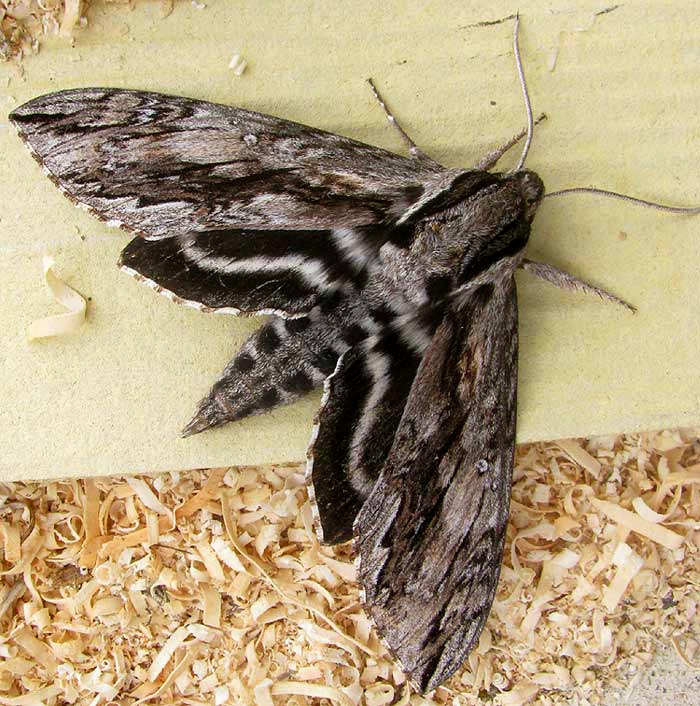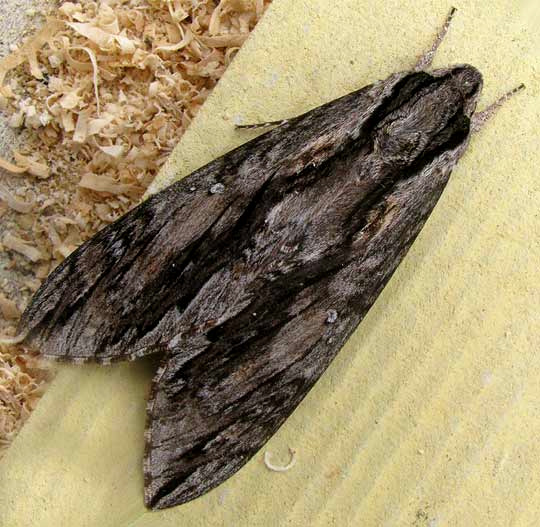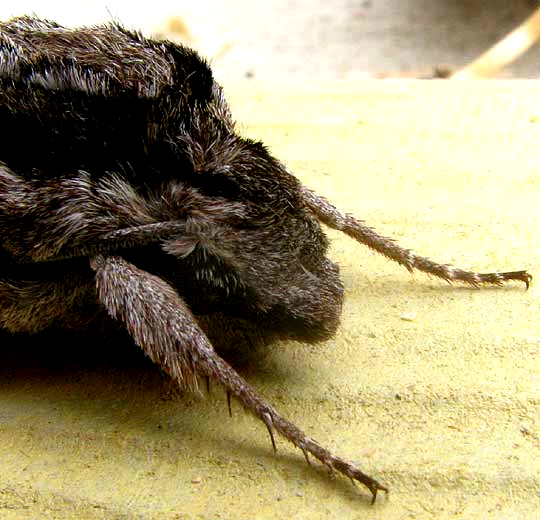Excerpts from Jim Conrad's
Naturalist Newsletter

from the April 7, 2013 Newsletter issued from the Frio Canyon Nature Education Center in northern Uvalde County, southwestern Texas, on the southern border of the Edwards Plateau; elevation ~1750m (~5750 ft); N29.62°, W99.86°; USA
ISTAR SPHINX MOTH
During recent early mornings big, brown moths have been turning up under security lamps that have shined all night. The moths are found still alive but unmoving, maybe having exhausted their energy flying around and around the light all night. Below you can see one at a neighbor's place:

This is a sizable moth with a wingspan of about 4½ inches (11.4cm). The head area reminds me of that of a hairy bat's, as shown below:

Once volunteer identifier Bea in Ontario had named it for me, I began thinking that maybe instead of a bat's head it looks more like the front end of the Sphinx, for this is a sphinx moth, the Istar Sphinx, LINTNERIA ISTAR, found from southern Arizona to here in southern Texas, through Mexico into Guatemala. The literature I find says it lives in pike-oak woodlands in the mountains, but here we have juniper-oak woodlands, and instead of mountains we have only fairly modest hills, so maybe here we're adding to the knowledge base about this moth.
At first the moth was so immobile that I thought it might be dead, but after I nudged it with a finger it fluttered briefly and came to rest with its wings spread, revealing bold markings on its hind wings, seen at the top of this page.
I read that Istar Sphinx larvae feed on various members of the Mint Family, which sounds right because here we have plenty of mint species, such as the Scarlet Sage so common on our wooded slopes, and the field of Basil Beebalm next to the cabin.
Istar females lure night-flying males by issuing pheromones from a scent gland at their rear ends.